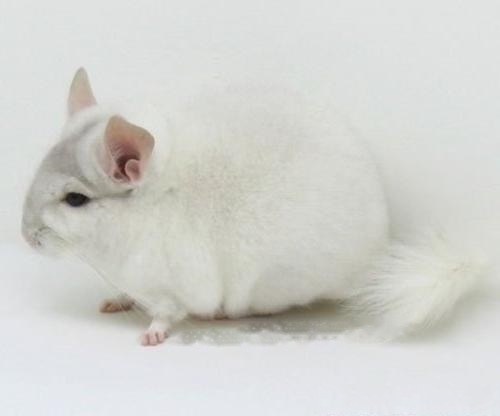Golden spotted Chinchilla is one of the densest hairs in the pet world, with up to 50 down hairs per pore. Cats and dogs have only 1-3 hairs per pore. It is conceivable to imagine the trouble that such thick hair brings to chinchillas and the many troubles it brings to the owners of chinchillas. So what other characteristics does it have? And how to feed it?

Gold Tabby chinchilla
Golden tabby chinchilla morphological characteristics
Adult chinchilla weight: male 400-500g/female 450-800g ; body length 20-25cm; tail length 7-15cm. Newborn pups weigh about 50 grams. The chevrons are very similar in appearance to rabbits and squirrels, with long-tailed and short-tailed species, small and fat, with a rabbit-like head and a squirrel-like tail. The chinchilla has large, bright eyes, many whiskers of different lengths on the side of the nose, and is sensitive to touch. The ears are large, thin, and bluntly rounded. The forelimbs are short with 5 toes, and the hind legs are strong with 4 toes and are good at jumping. The hair on the back and sides of the chinchilla is gray-blue (and some other artificially cultivated colors), and the abdomen gradually fades to white.
Most of chinchillas are gray, followed by beige, velvet black, and some special colors even appear every generation, or after several generations. The International Chinchilla Association divides chinchillas into 17 colors. However, since the color of chinchillas is mainly controlled by seven different dual genes, according to the color separation in the United States, there are 7 basic colors of chinchillas, and the combination of these seven dual genes can develop at least more than 20 kinds of coat colors. , so there are actually more than 17 colors of chinchillas.
The golden-spotted chinchilla is a combination of a pink-white chinchilla carrying the beige gene and a beige or golden chinchilla. According to the color matching analysis of the characteristics of the rice genetic gene and the beige genetic gene, the probability of producing a golden chinchilla is high, and the white gene is added to form a golden chinchilla carrying the double rice gene and the white gene: ruby eyes, pink Ears (without ear spots), white and beige in appearance. Like silver spots, the appearance of each golden spot will be different, some are more white, some are more beige, because of the different distribution of coat color. The golden-spotted chinchilla also has the white genetic gene. According to the color matching, two chinchillas carrying the white gene are paired, and the premature death rate accounts for 25%. So please avoid white with white for your cat's health.
Golden Chinchillas Feeding Knowledge
Golden Chinchillas have a docile temperament, like to live in a quiet environment, and are more sensitive to the reactions of their surroundings . The golden-spotted chinchilla, like the teeth of other rats, grows continuously throughout its life, so it is necessary to pay attention to the equipment or food of the chinchilla from birth.
If the incisors of the golden-spotted chinchilla are too long, it will make it difficult for the golden-spotted chinchilla to chew and affect its health. The long molars in the golden-spotted chinchilla will cause the root to grow into the brain and cause death. Commercially available molar stones can help golden-spotted chinchillas grind their teeth, while molars need to be worn by molar wood and timothy grass. The most economical and convenient molar wood should be the disposable birch chopsticks sold in supermarkets. Bamboo disposable chopsticks are not suitable for use because bamboo silk may cause digestive system problems in golden-spotted chinchillas.
When golden chinchillas are frightened, they emit a long, cry-like siren; when angry, they make a snake-like hiss or purr sound Sound; soft dove-like cooing sound when mating. In the group, the female golden-spotted chinchilla is in the dominant position. If the male and the female bite, the female generally wins. But when males and females are raised together, they get along very harmoniously and rarely fight. It sits on its hind limbs and uses the small claws of its front limbs to bring food to its mouth.
![[Dog Training 5] The training method of pet dog dining etiquette](/static/img/12192/12192_1.jpg)




